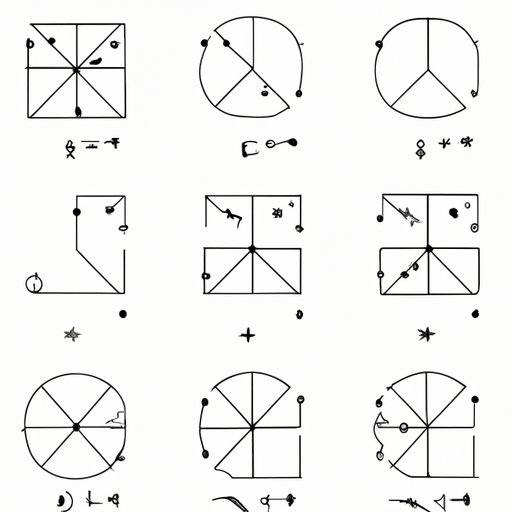Introduction
Geometry is a fundamental branch of mathematics that involves the study of shapes, sizes, and spatial relationships. One of the essential concepts in geometry is the line segment, which forms the building block of many geometric shapes. In this article, we will examine line segments’ basic definition, properties, and applications. This article is aimed at beginners in geometry, students, and teachers who want to learn more about line segments.
Defining A Line Segment: A Comprehensive Guide For Beginners
A line segment is a straight line that connects two distinct points, called endpoints. It is the shortest distance between these two points and has a specific length, which can be measured in various units such as inches, centimeters, or meters. For example, a line segment connecting points A and B can be written as AB, and its length denoted as | AB | or AB.
Line segments differ from other types of lines in that they have finite lengths and endpoints. In contrast, other lines such as rays or lines extend infinitely in both directions. For example, a ray has one endpoint and extends infinitely in one direction, while a line has no endpoints and extends infinitely in both directions.
All You Need To Know About Line Segments And Its Properties
Line segments possess several important properties that help us understand their behavior and use them in problem-solving exercises. One of the crucial properties is the midpoint, which is the point that divides the line segment into two equal halves. For example, in line segment AB, the midpoint is the point that is equidistant from A and B.
Congruence is another essential property of line segments, which refers to the equality of length between two line segments. Two line segments are congruent if they have the same length and are denoted by the symbol ≅. For example, AB ≅ CD means that line segment AB is equal in length to line segment CD.
Parallelism is also a critical property of line segments, which refers to the relationship between two or more line segments that do not intersect and remain equidistant from each other throughout their lengths. Parallel line segments can be represented by the symbol ∥. For example, AB ∥ CD means that line segment AB is parallel to line segment CD.
The Ultimate Guide To Understanding Line Segments – Definitions And Examples Included
Line segments can be classified into different types based on their orientation and position. A horizontal line segment is one that runs parallel to the horizon or the ground. A vertical line segment is one that is perpendicular to the ground and runs up and down. An oblique line segment is one that is slanted or diagonal.
Measuring the length of line segments is a fundamental task in geometry. Line segments can be measured using a ruler or other measuring tools. For example, to measure the length of a line segment AB, place the ruler at point A and note the reading at point B.
Line segments find applications in numerous real-world scenarios, such as in architecture, engineering, and art. For instance, architects use line segments to represent various parts of buildings, such as walls, doors, and windows. Engineers use line segments to design and build bridges, tunnels, and other structures. Artists use line segments to create various shapes, patterns, and textures in their artworks.
Line Segments Explained: The Lowdown On This Elementary Geometry Concept
One of the common misconceptions that students have about line segments is that they confuse them with other types of lines such as rays or lines. It is essential to clarify the difference between line segments and other lines and show how they are distinct concepts with unique properties.
Learning about line segments can be challenging, especially for beginners who are new to geometry. However, some techniques and ideas can help simplify the learning process. One of these techniques is visualizing line segments and drawing several examples to understand their properties and behavior better.
Breaking Down The Basics Of Line Segments: Definition And Characteristics
In summary, line segments are fundamental concepts in geometry that form the building blocks of many geometric shapes. They are defined as the shortest distance between two distinct points, with finite lengths and endpoints. Line segments possess crucial properties such as midpoint, congruence, and parallelism, which help us understand their behavior and use them in problem-solving exercises.
With the knowledge of line segments’ properties and applications, students can tackle various geometry problems in real-world scenarios. Furthermore, mastering line segments can serve as a foundation for learning other advanced geometry concepts, such as circles, triangles, and polygons.
Conclusion
In conclusion, line segments are crucial elements of geometry that have numerous properties and applications. In this article, we have explored the basic definition, properties, and applications of line segments. We have also discussed some common misconceptions and challenges that students face when learning about line segments.
We encourage students and teachers to continue exploring geometry and line segments further, as this will increase their understanding of the world around them and develop valuable problem-solving and critical thinking skills.
